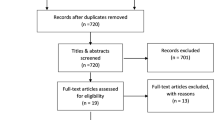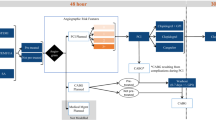Abstract
This article assesses the direct medical cost savings associaled with therapeutic dosages of pentoxifylline therapy compared with lower dosages in treating chronic occlusive arterial disease (COAD). The savings accrue from elimination of invasive diagnostic measures or a number of surgical procedures received by patients with COAD during hospital admissions. Findings are based on a secondary analysis of results presented in a previously published report of a population based historical cohort study. Patients in this study were severely enough afflicted by the disease that most were under the care of vascular specialists and many underwent surgery torestore normal blood flow. Costs are based on charges from Medicare expenditures in 4 US states in 1989.
A case-mix adjustment procedure was applied and a sensitivity analysis was conducted on key assumptions and variables in the cost savings model. Pentoxifyl1ine therapy reduced average hospital costs per patient by $US 1173 per year (1989 dollars). After further adjustment for the costs of outpatient visits. other related drugs and the drug acquisition cost, an overall saving of $US965 would still be realised with a patient who received the full therapeutic dose of pentoxifylline. Sensitivity analysis suggests total annual direct medical cost savings between $US69 and $US3090 per patient. Hence, under the most plausible assumptions regarding choice of procedures, study design and patient population, and considering the possibility thai diagnostic and surgical costs are delayed but not prevented. pentoxifylline therapy substanlially reduces direct medical costs.
Similar content being viewed by others
References
Amputalion Statistics of England. Wales, and Northern Ireland. Department of Health and Social Security. London. 1986
Andel GJ van Etp WFM van Krepel VM. Breslau PJ. transluminal dilation of the iliac anery: long-term results. Radiology 156: 321–323. 1995
Diener HC. Seboldt H. Dichgans J. Andris M. Springer G. et al. Stenosen und Verschlusse der extrakranielle n Arterien. Deutsche Medizinische Wochenschrift 108: 496–501.1983
European Working Gruup on Crilical Limb Ischemia. Second European consensus documenl on chronic crilical limb ischemia.Circulation 84 (Suppl. IV): IVI–IV25. 1991
Gillings D. Koch G. Reich T. Stager WJ. Anolher look at the pentoxifylline efficacy data for intennittent claudication. Journal of melinical Pharmacology 27 (8): 601–609,1987
Henzer NR. Beven EG. Young JR. O’Hara PJ. Ruschaupt WF. et al. Coronary artery disease in peripherat vascular patients: a classification of 1000 coronary angiograms and results of surgical management. Annals of Surgery 4: 199–223. 1984
Hewes RC. White RI. Murray RR. Kaufman SL, Chang R. et al. Long-term result of superticial femoral anery angioplasty. American Journal of Roentgenology 146: 1025–1029. 1986
Janson R. Neuhaus G. Thoelen M. ExtTakranielle artcrielle Verschluss-krankheit bei gefasschirurgischen Palienten mil peripheren Dutchblutusstorungen. Fonscllreitung Rontgenslrahlen 133: 484–493.1980
Jelnes R. Gaardsling O. Jensen KH, Backgaard N. Tonnesen KH. et al. Fate in inlennillent claudication: outcome and risk faciOTS. British Medical Journal 293: 1137–1140. 1986
Juergens JL Barker NW. Hines EA. Arteriosclerosis obliterans: review of520 cues with special reference to pathogenick and prognostic factors. Circulation 21: 188–195, 1960
Lindgllrde F, Felnes R, Bjorkman H, Adidsson G, Kjellstrom T, et al. Conservlli vedrug treatment in patients with moderately severe chronic occlusive peripheral antrial disease. Circuliacion 80: 1549–1556,1989
Martin EC. Transcatheter therapy in peripheral and noncoronary vascular disease. Circulation 83 (Suppl. I): 111–15, 1991
Mueller-Buellh V, Diehm C. Sieben U, Berger B, Scholer G, et al. Prfjvalera und Risikofaktoan von peripher-anerieller VerrxhhlSskrankhcilund koronlrer Herzkrankheil. Vasa 16 (Suppl. 21): 4–46. 1987
Porter JM, Cutler BS. Lee BY, Rriehc T, Reichle FA, et al. Pentoxifylline efficacy in the treatment of intermittent claudication: multicenter controlled double-blind trial with objtctive assessment of chronic occlusive arterial disease patients. American Heart Journal 104: 66–72. 1982
Rosenbloom MS, Flanigan DP. Schuler JJ, Meyer JP. Durham JR, el al. Risk factors affecting the natural history of intermittent claudication. Archives of Surgery 123: 867–870, 1988
Schwarten DE. Cutdiff WB. Arterial occlusive disease below the treatment wilh percutaneous transluminal angioplasty performed with low-profile cathelers and llteerable guide wires. Radiology 169: 71–74,1988
Sieben U, Mueller-Buehl V, Berger B, Morl H, Schuler G.et al.Arterielle Verschlusskrankbeit und koronaln HenkunkheitgemeinsamePrlIvalenl und Risikofaktoren. Vasa 20 (Supp1.): 267–265,1987
Steinke W, Al-Deeb S, Henneriei M. Priivalenz utrakranieller Ge. fassprousse und Risikoprofil bei Patienten mit periphertr und koronirtr Angiopathic.Vasa 16, 283–290, 1987
Stergachis A, Sheingold S, Luce BR. Psaty BM, Revicki DA. Medical care and coSt outcomes after pentoxifylline treatment for peripheral arterial disease. Archives of Internal Medicine 152: 1220–1224,1992
Tonnscn KH. Siger p, Karle A. Henriksen L, Jorgensen B. Percutancious transluminal anllioplasty of the superficial femoral artery by retrogadede atbettriution via the popliteal artery. Cardiovascular Intervemion Radiology 11: 127–131. 1988
Turnispeed WO. Berlcoff HA. Belzer FO. Postoperative stroke in cardiac and peripheral vascular disease. Annals of Surgery 192: 365–372. 1980
Widlus DM, Ostennann FA. Evaluation and percutaneous management of atherscletoric peripheral vascular disease. Journal of the American Medical Association 261: 3148–3154. 1989
Author information
Authors and Affiliations
Rights and permissions
About this article
Cite this article
Neels, K., Finkelstein, S. & Douglass, C. Medical Cost Savings from Pentoxifylline Therapy in Chronic Occlusive Arterial Disease. Pharmacoeconomics 5, 130–140 (1994). https://doi.org/10.2165/00019053-199405020-00007
Published:
Issue Date:
DOI: https://doi.org/10.2165/00019053-199405020-00007




